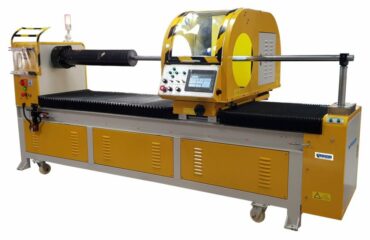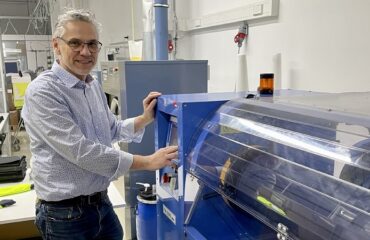The fashion industry is in the midst of a seismic shift. Consumers no longer settle for mass-produced garments—they crave unique, customized pieces that reflect their individuality. This surging demand is reshaping brand strategies, revolutionizing production, and redefining how we express ourselves through fashion.
The Rise of Personalized Fashion
Personalization isn’t a new concept—bespoke tailoring has been around for centuries. But thanks to groundbreaking technology, what was once an exclusive luxury is now accessible to the masses.
According to McKinsey’s The State of Fashion 2023 report, 71% of consumers expect brands to deliver personalized experiences, and 76% become frustrated when those expectations aren’t met. () This consumer-driven revolution is forcing the fashion industry to rethink everything, from design to production and delivery.
The Tech Behind the Transformation
Innovation is fueling the personalization boom. Here’s how cutting-edge technology is turning made-to-order fashion into a scalable, profitable reality:
3D Printing: Reinventing Manufacturing
Adidas is a pioneer in this space, integrating 3D printing into their Futurecraft line. Their custom midsoles adapt to individual foot pressure points and gait, providing unparalleled comfort and performance. But the potential extends beyond footwear—startups are now 3D-printing entire garment components, minimizing waste and unlocking design possibilities previously unimaginable.
AI & Machine Learning: Next-Level Personalization
Brands like Stitch Fix blend human stylists with AI-driven algorithms to curate hyper-personalized fashion recommendations. With over 4 million active users, Stitch Fix exemplifies how AI can decode individual style preferences with incredible accuracy.
Body Scanning: Precision Fit, Every Time
Uniqlo has introduced body scanning technology in select stores, allowing customers to create digital avatars for accurate sizing recommendations. This technology eliminates guesswork, reduces returns, and ensures a flawless fit.
The Machinery Powering Personalization
While digital advancements steal the spotlight, specialized machinery is the backbone of small-batch, custom production. One standout player in this arena is Svegea of Sweden.
Svegea’s Role in Personalized Fashion
Svegea, a leader in textile machinery manufacturing, develops precision bias-cutting machines that enable small-batch production without sacrificing quality. Their collarette cutting machines, crucial for trim and binding production, make detailed customization viable at scale.
Automation: The Secret to Scalable Customization
Contrary to popular belief, automation isn’t the enemy of personalization—it’s the key to making it efficient.
Smart Factories: Rapid, Flexible Production
Advanced robotics and computer-controlled cutting systems can switch between personalized designs seamlessly, drastically cutting lead times. What once took weeks can now be produced in days, meeting consumer expectations for speed and exclusivity.
On-Demand Manufacturing: Redefining Fashion’s Business Model
The traditional model of mass-producing inventory is fading. Instead, agile, on-demand production is emerging as the future.
- Made-to-Order Success Stories: Companies like Proper Cloth create perfectly tailored shirts based on individual measurements, eliminating inventory waste and boosting customer satisfaction.
- Microfactories for Localized Production: The concept of small, tech-powered production hubs is gaining traction. According to Fashion for Good, micro-factories can reduce carbon emissions by up to 35% compared to traditional supply chains.
Why Consumers Love Customization
Beyond the cool factor, there are deeper reasons why personalized fashion is taking over:
1. A Unique Identity
In a world of fast fashion, standing out is more important than ever. Studies show that 80% of consumers are more likely to buy from brands that offer personalized experiences.
2. The Perfect Fit
Sizing inconsistencies have plagued shoppers for decades. Custom-fitted clothing eliminates this issue, reducing costly returns—an issue that costs the fashion industry $300 billion annually.
3. Sustainability at Its Core
Personalized fashion isn’t just stylish—it’s eco-friendly.
- Less Waste: On-demand production slashes overproduction and reduces landfill-bound inventory.
- Longer Wear: Research suggests personalized items stay in a consumer’s wardrobe up to 50% longer than mass-produced alternatives.
Brands Leading the Charge
Several fashion giants are proving that personalization isn’t just a gimmick—it’s a game-changer.
- Nike By You (formerly NIKEiD) allows customers to customize every element of their sneakers, adding over $1 billion in direct-to-consumer revenue.
- Ministry of Supply offers 3D-printed knit blazers, tailored to individual measurements in under 90 minutes.
- Unspun uses body scanning to create zero-inventory, custom-fit jeans, reducing carbon emissions by up to 40%.
Challenges & The Future of Personalized Fashion
Despite its rapid growth, personalized fashion isn’t without obstacles:
- Cost & Scaling: Custom production is still pricier than mass manufacturing, but as technology advances, costs are dropping—Deloitte reports a 30% decrease in price premiums for personalized products over the past decade.
- Consumer Awareness: Many shoppers still see personalization as a luxury. Brands must invest in educating consumers on its accessibility and long-term value.
The Future: Customization as the New Norm
Fashion’s transformation is just beginning. As technology evolves, personalized fashion will become an everyday expectation rather than an exclusive option. Brands that embrace this shift will benefit from stronger customer loyalty, reduced waste, and a more sustainable future.
The era of mass-produced fashion is fading. In its place? A world where every piece of clothing tells a unique story—your story.






